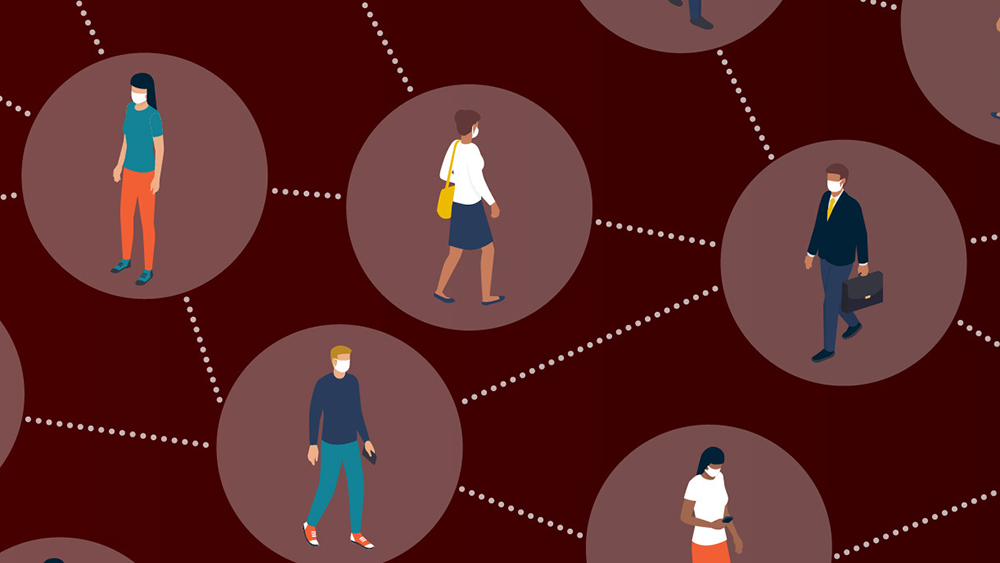
Tracking the spread of COVID-19 is vital for public health decision making. To this end, Dr. Ulisses Braga-Neto is working with undergraduate and doctoral students in the Department of Electrical and Computer Engineering at Texas A&M University to model the spread of COVID-19 and estimate its true prevalence from incomplete and noisy testing data.
Tracking COVID-19 on campus
Senior Durward Cator III is working with Braga-Neto, professor in the department, on a model to track the spread of COVID-19 on Texas A&M’s campus using its evolution over space and through time.
The model Cator is using is based on a campus SEIR (susceptible, exposed, infected and recovered) model. The model can generate population plots of the susceptible, infected and recovered individuals on campus. Cator explained that the probability of a contact infection is not directly shown but can be approximately inferred from the graphs. These probabilities can be changed based on factors such as mask wearing and social distancing.
In his model, Cator can account for student behavior, such as movement between buildings and building proximity, to accurately simulate and track the spread of COVID-19 on campus.
Cator began this project when he applied for and was accepted in the Online Research Experience for Undergraduates (O-REU) program over the summer. Shortly after joining the program, Braga-Neto approached Cator with the idea for this project and he was immediately intrigued.
"(The O-REU program) has definitely been a useful experience," Cator said. "I am glad that I did it and I’m happy to continue working on (this project) and hopefully do something useful for the campus and create something everyone can use."
While Cator and Braga-Neto are still running simulations, their ultimate goal is to gather real campus data and then integrate that data into the model to allow them to deploy this tool for campus use.
Expanding to the state of Texas
Doctoral student Yukun Tan is working with Braga-Neto on a similar project, but instead of focusing on the spread of COVID-19 on campus, his research focus encompasses the entire state of Texas.
Tan began this research project after the high second round of reported cases in Texas in June. Prior to tackling this project, he was working with Braga-Neto on signal processing and machine learning tools for a gene regulatory network interface, and wanted to use the expertise from that area to explore and predict epidemic-related issues.
Braga-Neto explained that the gene regulatory network project and the COVID-19 model project are similar in that at any given time there is a state of a gene to assess, and for the COVID-19 model, there is a state of an individual to look at, for example whether they are infected or not infected.
“It is a very practical project,” Tan said. “If we do well we could not only get the prediction of our current and future situation, but also obtain the guidance of how to prevent and control the epidemic in reality.”
One thing that sets Tan’s work apart from the campus simulations Cator is running is that Tan can apply the real-world data provided by all the counties in Texas to his model.
For the campus, state and nation, finding a way to accurately track the spread of COVID-19 is the first step in understanding and overcoming the pandemic. Fortunately, researchers at Texas A&M are already hard at work to help solve this problem.